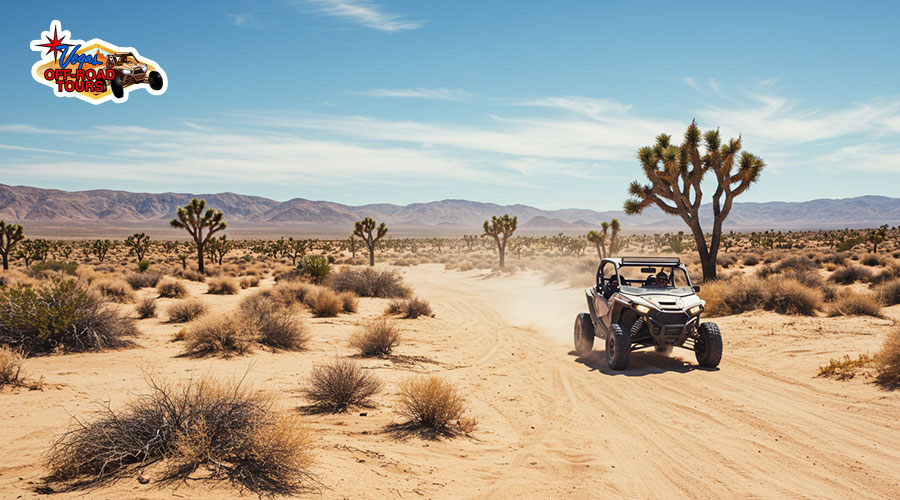Mojave Desert Treasures: Off-Road Tours Through History, Plants, and More
Why a Mojave Desert Off Road Tour Is a Journey Through History and Nature
A Mojave Desert off road tour is more than just an adventure across rugged trails; it is a journey into the heart of history and the living beauty of the desert. As your tires crunch across the sandy ground and rocky paths, you are not only exploring a landscape shaped by nature but also stepping into stories that date back thousands of years. From ancient Native American cultures to the hardy plants that have adapted to extreme conditions, the Mojave is filled with treasures waiting to be discovered.
The Mojave is not just a desert—it is a living museum. Its open skies, winding canyons, and vast plains hold the imprints of cultures, plants, and creatures that have survived against the odds. To travel here on an off-road vehicle is to combine adventure with learning, excitement with respect, and discovery with preservation.
The Desert’s Timeless History
Native Roots
Long before roads, trails, or vehicles crossed the Mojave, Native American tribes thrived in its challenging environment. Tribes such as the Mojave, Chemehuevi, and Paiute adapted with remarkable skill, using seasonal migration, water knowledge, and plant medicine to sustain themselves.
Petroglyphs carved into canyon walls tell stories of hunting, rituals, and daily life. Grinding stones found near dry riverbeds reveal how families processed seeds and nuts. These signs of life show that the desert, far from being empty, was once bustling with human activity deeply connected to the land. Learn more about Native American heritage in the Mojave from the National Park Service.
Spanish and Pioneer Arrivals
By the 18th century, Spanish explorers traveled through these harsh lands, mapping routes and seeking resources. Later, settlers and pioneers came westward, drawn by promises of new opportunities. Some were prospectors, hunting for silver and gold in the rocky hills. Others built trade routes, stagecoach stops, and railroads that connected isolated communities.
Today, remnants of this past still remain. Rusted mining equipment lies half-buried in the sand, ghost towns stand with weathered wood and broken windows, and old wagon routes can still be traced by the careful observer.
Ghost Town Echoes
Few places capture the imagination like the ghost towns scattered across the Mojave. Once filled with life and hope, these towns now stand in silence. Buildings lean with the weight of time, and streets that once echoed with footsteps now hear only the wind. Exploring them on an off-road tour gives you a chance to step into another era, imagining the dreams and struggles of the people who once called this desert home.
Plants That Tell Stories
Desert Survivors
The Mojave’s flora is as fascinating as its history. Every plant here has adapted to survive scorching summers, cold nights, and long stretches without rain. To the casual traveler, the desert might seem barren, but in reality, it is alive with unique vegetation.
The Joshua tree is the Mojave’s most famous resident. Standing tall with its twisted, spiky arms, it is both haunting and beautiful. These trees can live hundreds of years, serving as shelter for birds, insects, and mammals.
Creosote bushes dominate much of the landscape, spreading across the sandy soil. Their yellow flowers bloom in spring, but what truly makes them memorable is the scent they release after rainfall—a sharp, earthy fragrance often described as the smell of desert rain.
Seasonal Blooms
In springtime, after a season of rare rains, the desert bursts into color. Wildflowers such as desert marigolds, sand verbena, and evening primrose blanket the desert floor, turning stretches of dusty land into living carpets of pink, yellow, and purple. These seasonal changes remind visitors that the Mojave is far from lifeless—it is simply patient, waiting for the right moment to reveal its beauty.
Plants as Resources
For centuries, plants have provided food, medicine, and tools to the people of the desert. Agave stalks were roasted for food, yucca fibers were woven into ropes and mats, and cacti offered both fruit and hydration. Even today, scientists study these plants for their unique survival strategies, which could inspire solutions for farming in arid climates.
Wildlife Along the Trails
Small But Mighty
The Mojave is alive with creatures that have perfected the art of survival. Lizards bask on warm rocks, blending in with their surroundings until they dart away in a flash. Desert tortoises, one of the region’s most iconic species, spend much of their lives in burrows to escape the heat, surfacing to feed on grasses and wildflowers.
Birdlife is abundant as well. Red-tailed hawks circle above the canyons, searching for prey, while roadrunners dart across trails with surprising speed.
Larger Desert Dwellers
Coyotes, often heard before they are seen, roam the Mojave in search of food. Jackrabbits leap across the terrain, their large ears cooling them in the desert heat. Occasionally, lucky visitors may spot bighorn sheep climbing rocky slopes, perfectly at home in places that seem impossible to navigate.
Every animal is part of the desert’s web of life, and spotting them on a tour adds another layer of excitement and connection to the land.
Landmarks Worth Discovering
The Mojave is filled with destinations that give travelers both a sense of wonder and a lesson in history. Some highlights include:
- Kelso Depot: Once a bustling train station, now a visitor center that teaches about the desert’s past.
- Mojave National Preserve: A vast protected area with sand dunes, volcanic cinder cones, and mountain ranges.
- Amboy Crater: An ancient volcanic cone that hikers can climb for panoramic desert views.
- Mitchell Caverns: Limestone caves filled with stalactites and stalagmites, offering a glimpse underground.
- Old Mining Camps: Wooden cabins, rusted tools, and collapsed shafts that echo the desert’s mining boom.
Each landmark is like a chapter in the Mojave’s story, and exploring them by off-road vehicle makes the journey as memorable as the destination.
The Adventure of Off-Roading
Off-roading is more than driving—it is an experience. The thrill of maneuvering over rocks, climbing steep trails, and crossing sandy washes gives a sense of freedom that traditional roads cannot offer. But the adventure is not just in the challenge of the terrain; it is also in the surprises around every corner.
A turn may lead to a hidden canyon filled with wildflowers. A climb may reveal a sweeping view of mountains stretching endlessly into the horizon. The unpredictability makes every ride unique.
Guided tours provide both safety and knowledge. Local guides know which trails are best, how to handle tricky terrain, and where to find hidden gems. They share stories of history and ecology, turning a ride into a true learning experience.
Hidden Corners and Secret Spots
One of the joys of traveling the Mojave by off-road vehicle is discovering places that most travelers never see. Some of these include:
- Remote springs where animals gather in the cool of the evening.
- Shaded canyons with petroglyphs carved hundreds of years ago.
- Valleys that explode with color after seasonal rains.
- Rock shelters where ancient people once rested on long journeys.
These secret spots remind travelers that the Mojave’s beauty lies not just in its famous landmarks, but in its quiet corners that hold endless surprises.
The Balance of Preservation and Adventure
The Mojave is resilient but also fragile. Plants may take decades to grow, and a single careless step can damage them. Wildlife is easily disturbed, and historic sites can be ruined by vandalism or neglect.
That is why responsible exploration matters. Staying on marked trails prevents soil damage, carrying out trash keeps the desert clean, and respecting cultural sites preserves them for future generations. Guided tours help reinforce these principles, ensuring that visitors enjoy the desert while also protecting it.
A Desert That Inspires
The Mojave has always inspired those who travel through it. Writers describe its solitude, artists capture its light, and adventurers test themselves against its extremes. Its landscapes, from the dunes of Kelso to the peaks of Clark Mountain, offer endless opportunities for reflection and wonder.
Travelers often leave the Mojave with more than photos; they leave with a deeper respect for nature, history, and resilience.
Conclusion: Your Next Desert Adventure
A journey into the Mojave is more than sightseeing; it is an immersion into history, nature, and discovery. Whether you are drawn by the ghost towns, fascinated by the plants, or eager for the thrill of the trails, every stop offers something unique.
When you set out on a Mojave Desert off road tour, you are not just exploring; you are uncovering treasures that have been waiting for centuries. The desert is alive with stories, from its windswept plants to its silent ruins. With every mile, the Mojave reveals more of its secrets, reminding you that true adventure lies in the meeting of history, nature, and the open trail.

